Let’s see a show of hands of the people who knew there was a TWA Museum in downtown Kansas City, Missouri. An unseasonably warm Saturday morning was the perfect chance to check it out. Located at 10 Richards Road, in the Charles B. Wheeler Airport, this unique museum highlights the 75-year lifespan of the airline. Arriving at the opening, we had plenty of time to get up, up, and away with TWA. While the airline no longer exists in this name, its spirit still beats with its employees.
We want to thank the TWA Museum for its hospitality. Rest assured that all opinions are our own.
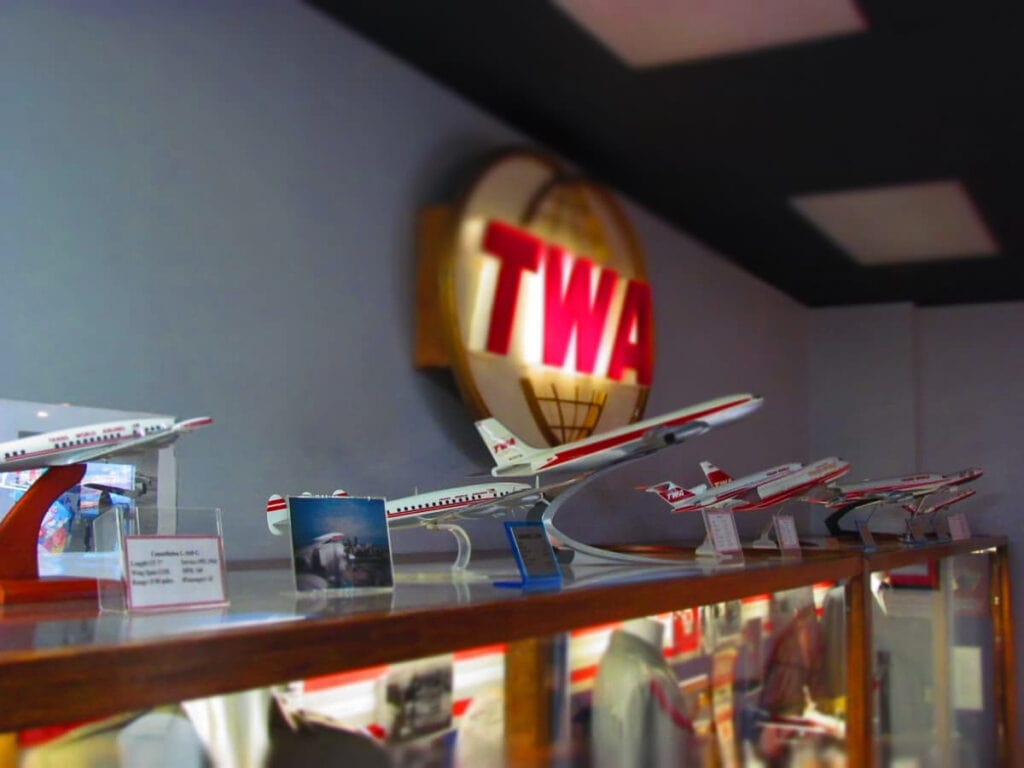
TWA Through The Years
The TWA Museum shares a building with an airline service that is still in business. This made for an interesting visit, as we watched a few planes taking off and landing during our visit. As you approach the museum entrance, you will find an assortment of historical pictures and memorabilia. Timeline boards highlight the chronology of the airline’s existence. Here we found interesting articles about some of the historic events that involved the airline and its employees.
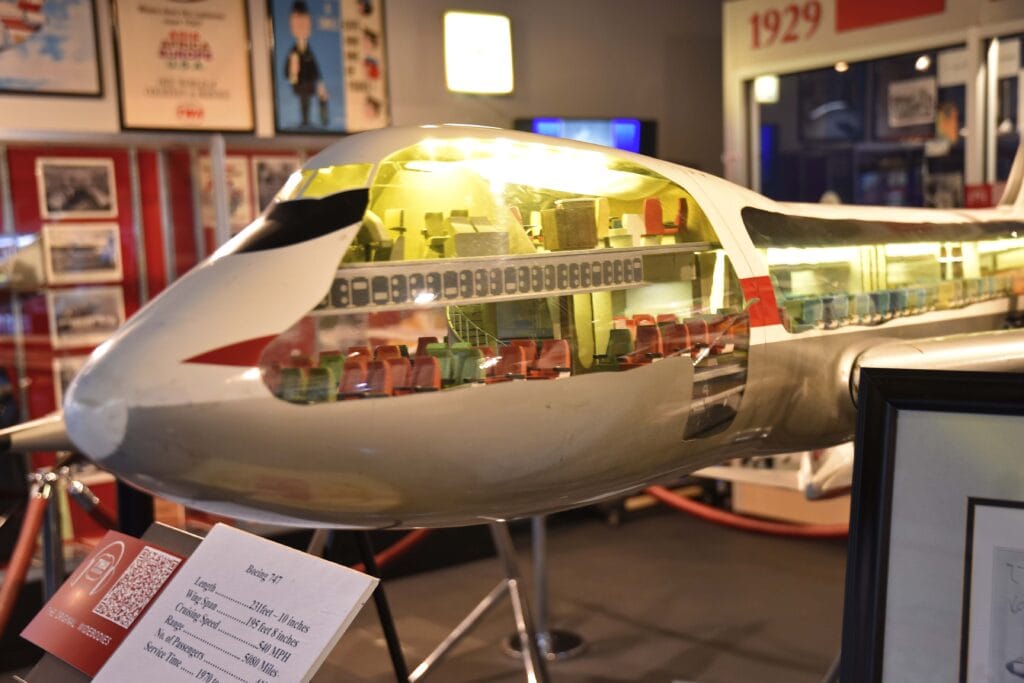
Entrance Information for TWA Museum
At the end of the hall, you come to the official entrance to the museum. You will be greeted by one of the museum staff, who will happen to be a volunteer. The entire staff at the TWA Museum is made up of volunteers, and about 90% of these are former TWA employees. Admission is $12.00 for adults, $8.00 for seniors, and children 6-16 pay $6.00. Anyone in the party younger than that will get free admission. Heading into the first gallery, we found ourselves in a room packed full of aviation artifacts.
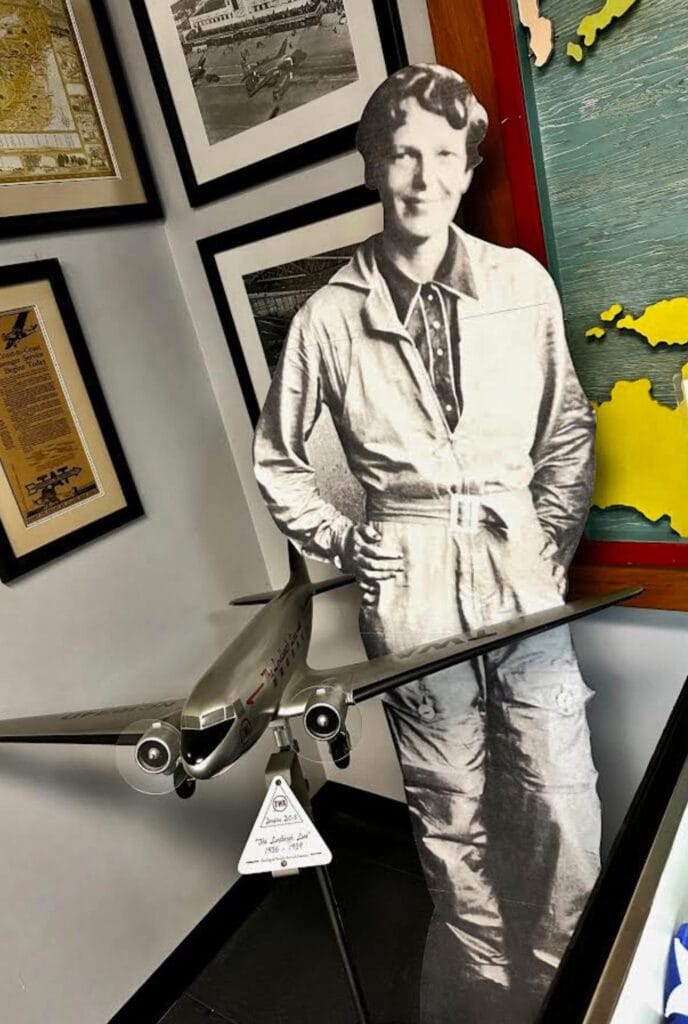
The Early Years
Transcontinental & Western Air was born from a merger in 1930. Much of the air travel of those days was focused on the delivery of mail and goods. Charles Lindbergh was one of the founding members of the airline, having come from the Transcontinental Air Transport side of the merger. William “Jack” Frye came from the Western Air Express side and ended up serving as president of the newly created airline from 1934 until 1947. The high-profile pilots that TWA secured brought an air of credibility to TWA, and it became known as “The Airline run by Flyers”. Another notable celebrity from the airline’s early years was Amelia Earhart.
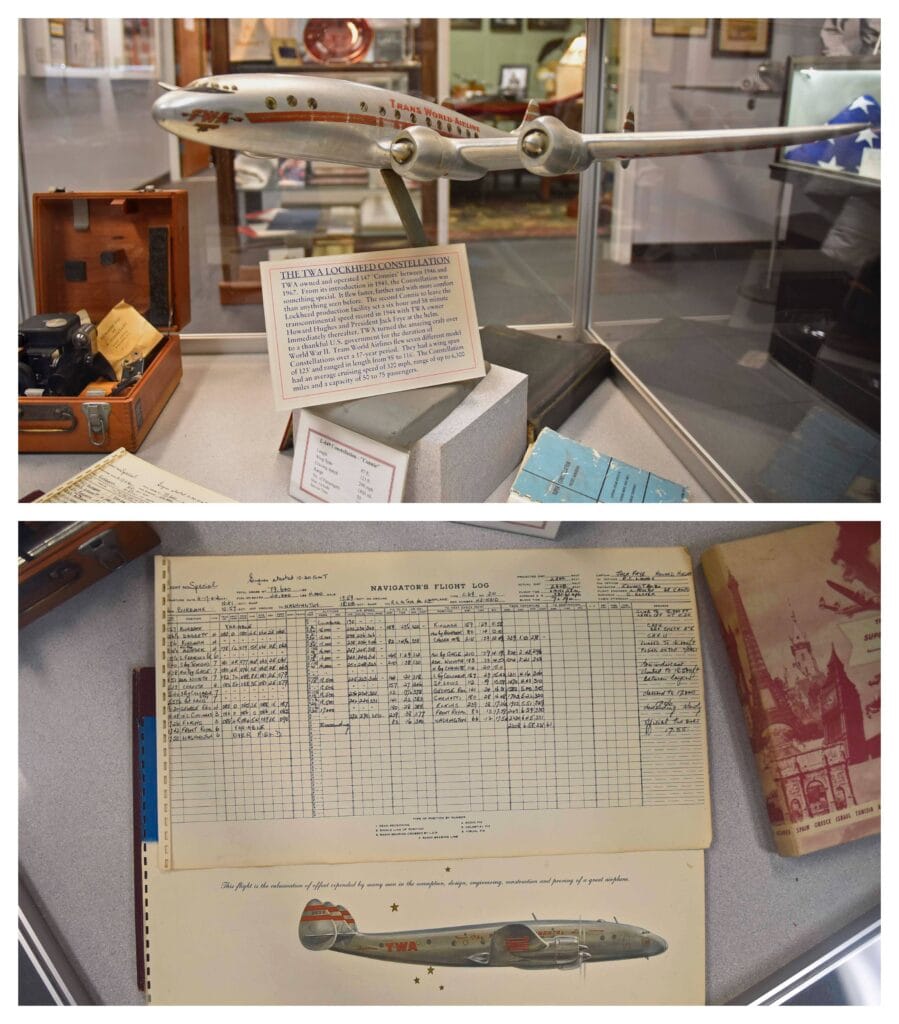
Time For Change
In 1931, the airline suffered a setback when one of its wooden planes crashed on its way to Wichita, Kansas. The death of eight people was compounded by one of them being football coach, Knute Rockne. The crash discredited the use of wooden-framed aircraft and helped usher in the era of all-metal planes. This change would also create the research needed to allow aircraft to fly at higher altitudes, which would have been impossible without pressurization. In 1937, the Boeing Stratoliner began flying the skies and became the first commercial plane with pressurized cabins. In 1938, Howard Hughes agreed to purchase 25% of the airline. By 1941, Hughes had a controlling interest, and the airline prospered during World War II. By the latter half of the 1940s, internal strife had dealt significant blows to the airline, and by 1958 the executive offices moved from Kansas City to New York City.
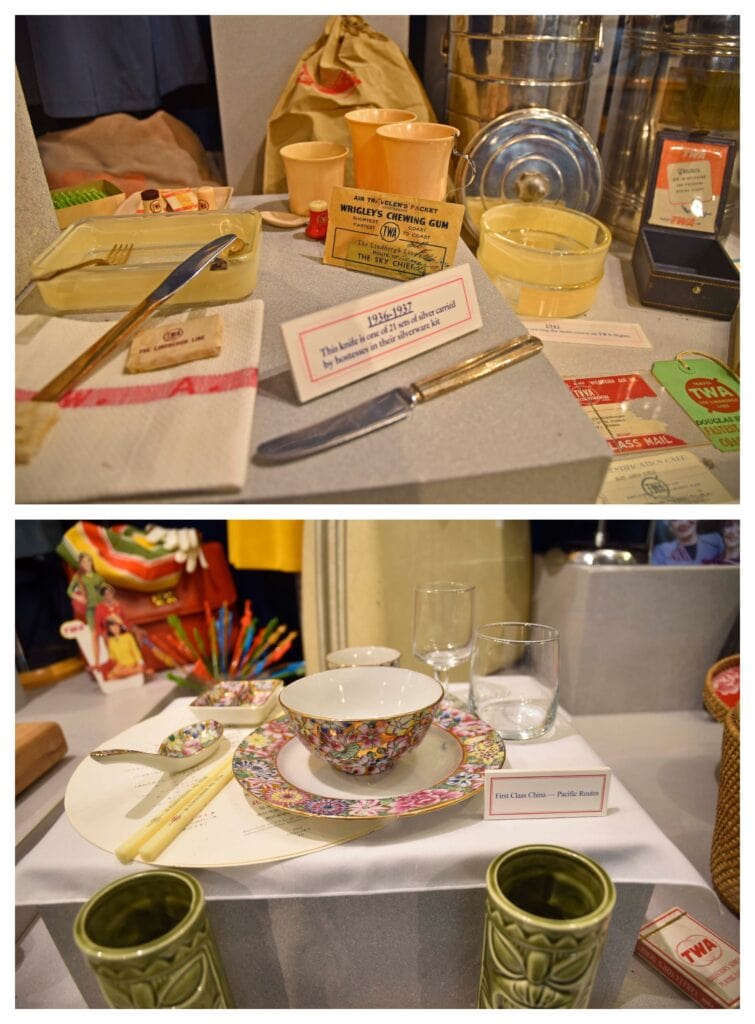
Golden Age of Air Travel
In the 1930s, the airlines had strict requirements for their flight attendants, which included the requirement that they were nurses. During those days planes flew at much lower altitudes since they weren’t pressurized. This led to excessive turbulence on many flights and more illnesses than we see these days. The idea of having nurses was they would be reassuring for the passengers. As flight comfort improved, so did the quality of items carried on the planes. The styles of the times were quite often reflected in the items found during flights. How many of these items do you remember?
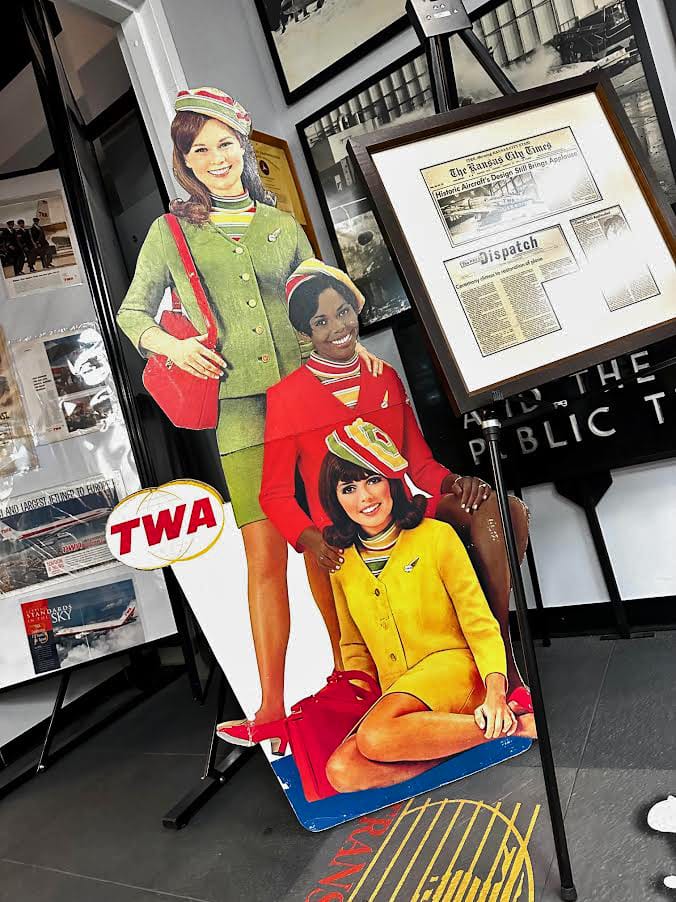
Moving With The Times
Flight attendants found that their uniforms also changed with the times. Some were designed to match current styles, while others were meant to be used during certain promotions. The TWA Museum even has uniforms on display that were made of paper. For almost one year, TWA tinkered with the idea of making their domestic flights more dramatic. They would designate one of four specific styles for each flight, and attendants were supplied uniforms to match the style, just before boarding. These paper uniforms were one size fits all, and ever-increasing logistical issues caused the early abandonment of this promotion.
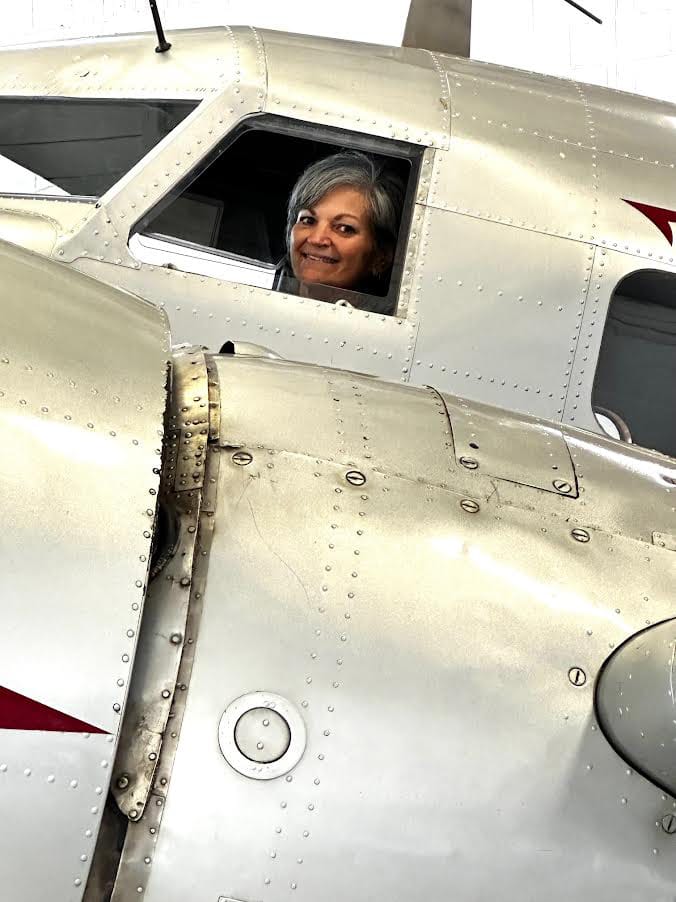
Getting Hands-on
The 1951 flood highlighted the need to create a new airport away from the often swollen riverbanks. This was the spark needed to build the new international airport north of the metro. At its peak, TWA employed over 20,000 employees and was one of the largest employers in the Kansas City area. TWA led the way in many areas of the commercial aviation field. It was the first airline to hire an African-American flight attendant and did so in 1958. In 1961, it became the first American airline to show in-flight movies. TWA developed the innovative idea to move gate access closer to the street level. This was to provide quicker service to customers. It became a costly endeavor when the hijackings of the 1960s forced tighter security measures.
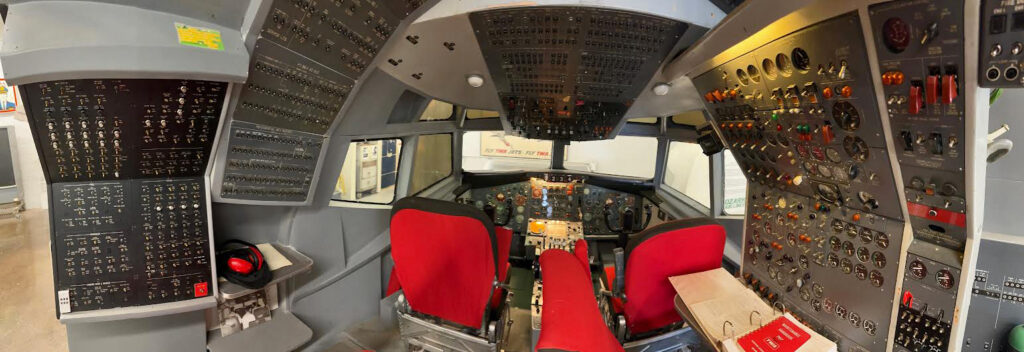
Dizzying Array
Once we finished in the first couple of galleries, a former employee asked if we wanted to visit the hangar. The first thing we spotted was a 1930s-era research plane. They let us inside to check it out and Crystal quickly took command. After prying her out of the pilot’s seat, we made our way to a couple more exhibits. These were set up to display how TWA employees would have trained. Various pieces of equipment allow hands-on practice. Just looking at the dizzying array of switches and buttons reminded us how complicated air travel can be behind the scenes. It’s a far cry from a seat in the cabin with a cold drink.
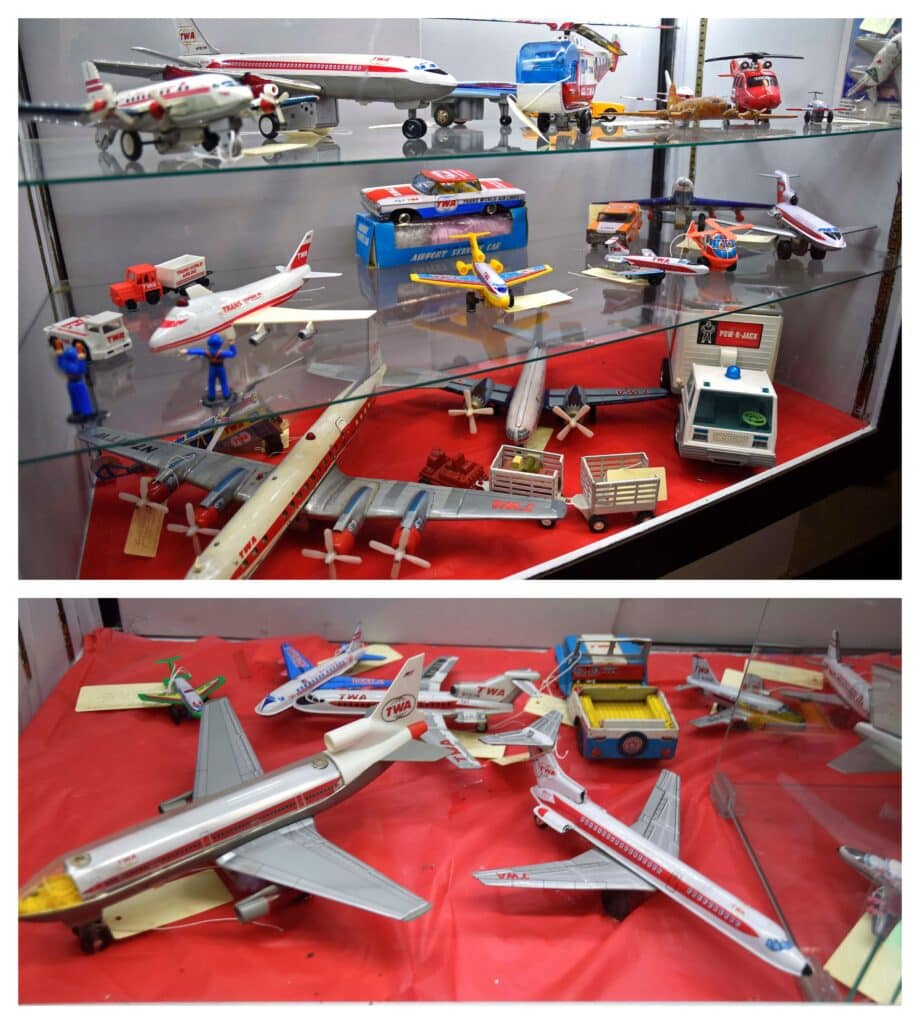
Fun Memories
TWA was such an integral part of American life, that there are even a couple of display cases filled with toys based on the airline. The TWA logo adorns model planes, helicopters, cars, trucks, and other assorted items. I remember some of these from my youth, as I am sure most people would. The depth of saturation that this company had into American life shows just how integral its role was to the public. As our time at the TWA Museum drew to an end, we returned to the main galleries. Here is where many of the volunteers wait for new visitors to arrive for tours.
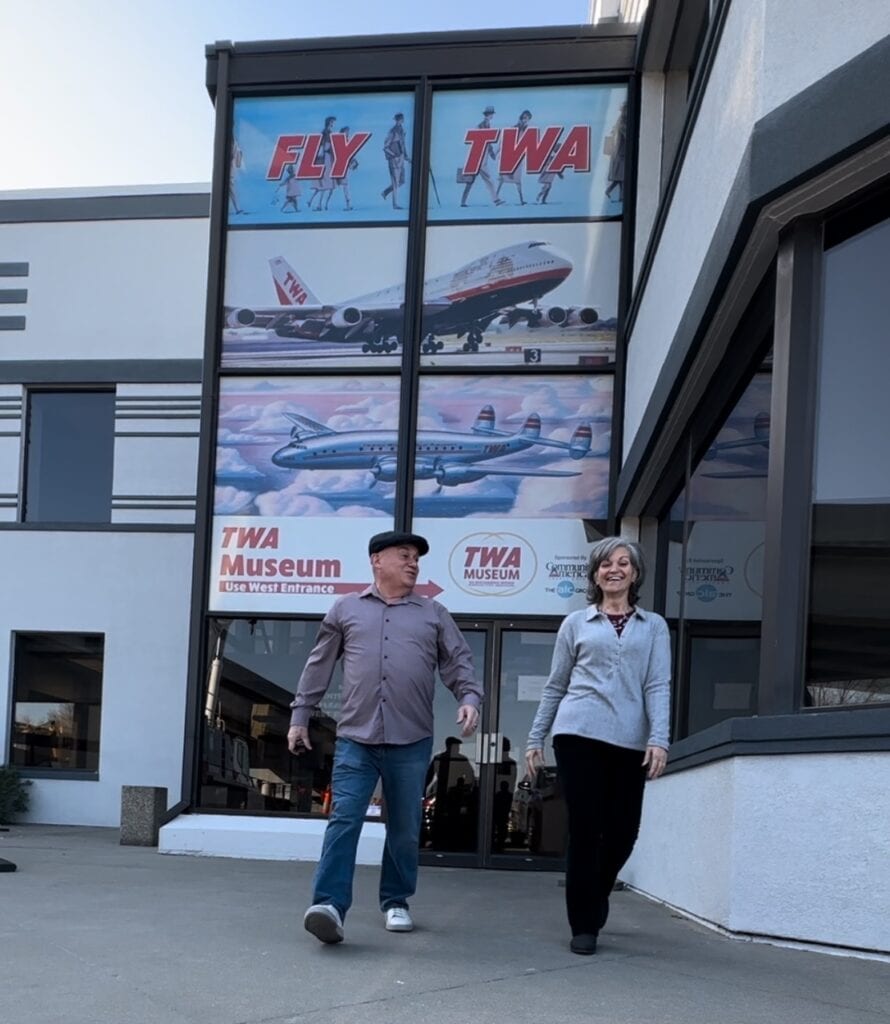
TWA Museum Discussions
Our visit lasted about 1.5 hours. Even before making it to our car, we were already reminiscing about stories we had read. For your visit be sure to allow plenty of time to see, hear, and explore this unique Kansas City museum. You can visit them on Wednesday through Saturday. They are open from 10:00 to 4:00 each of those days but double-check if the weather is especially bad. Be prepared to find a lot of unbelievable items, as the museum covers 75 years of airline history. It’s certainly a stop that will provide a ton of conversation starters.


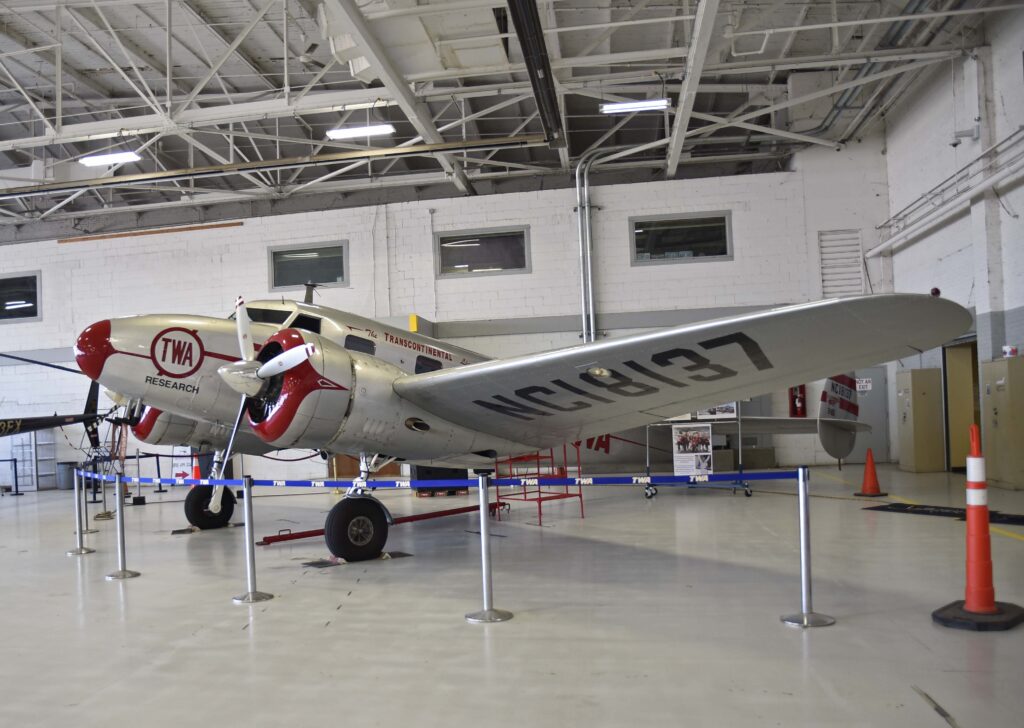
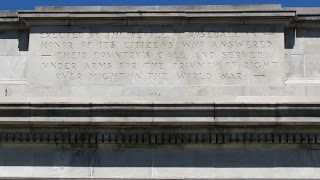
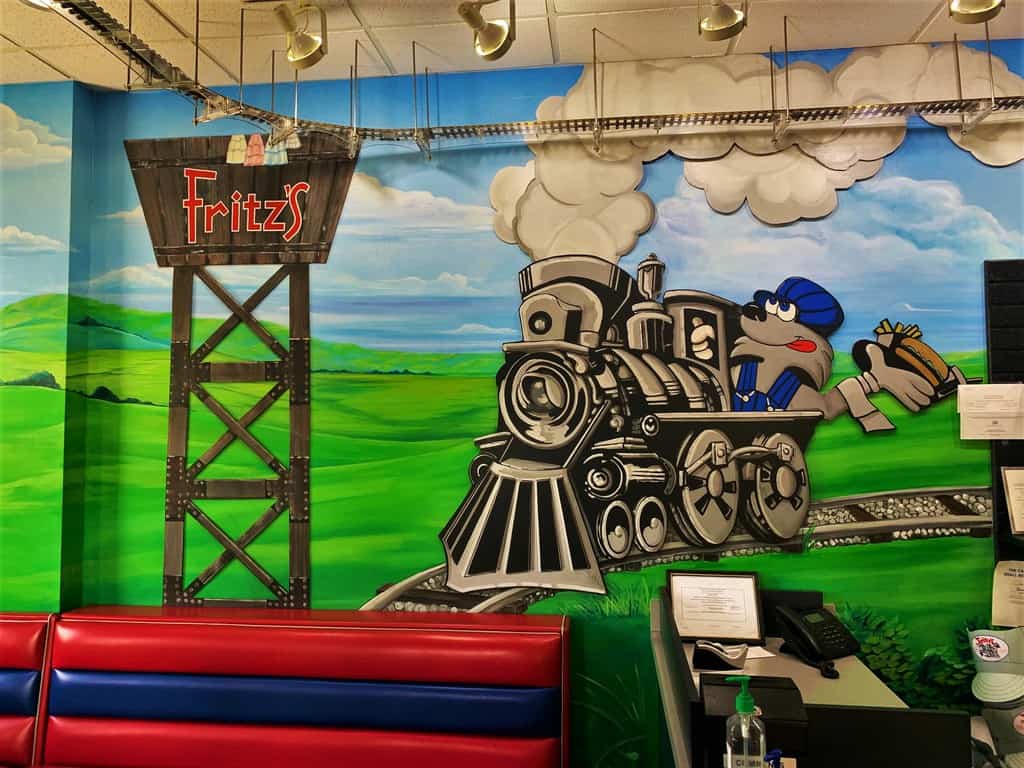
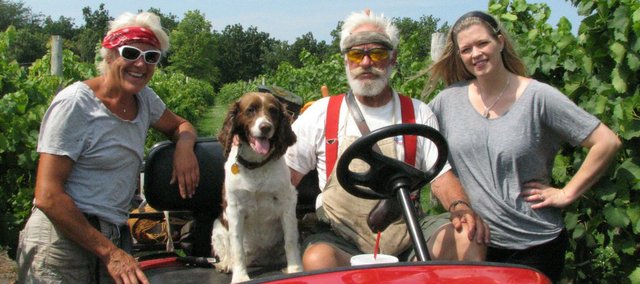
I have know about this place and had some other friends have gone,but just haven’t taken the time to get there for a visit. After reading your article I am moving it up on my list to visit within the next month.
We hope you enjoy it as much as we did.
Do you get to tour the inside of the plane?
Yes! The cockpit picture is from the plane on the tarmac.
Thank you for sharing this brings back many memories of my father Eugene Delbert Bridges who was a flight engineer for TWA. He has since passed but I still remember all the flights we went on I have memorabilia from TWA such exciting times I felt glamorous when I got to go on a flight with my dad. Love love love TWA
You are quite welcome. We are glad you enjoyed the article.
I enjoyed your blog about TWA Jeff and Crystal , very interesting , was never able to fly but ,I remember going ,taking our children out to watch them come in and take off so much fun ,and now we can see them up close thanks to the museum , thanks again very good job
Thanks.
I would love to visit this museum one day, Jeff and Crystal! Thanks for the informative and educational post!
You are welcome. We hope you get the chance some day.
I am THRILLED to see this. I am one of the many volunteers at the TWA Museum. We are very passionate about TWA and getting the opportunity to share this with our visitors. Thank you for such a wonderful article!!!
You are quite welcome, and thank you for volunteering. The museum is certainly a jewel in our city.
The TWA Museum was very interesting & quite a thrill for 2 laid off/retired Boeing Wichita employees. We wouldn’t have heard about it, but I just happened to read this article right before our trip. I look forward to reading more about restaurants & attractions on the Our Changing Lives website.
We are so glad you stumbled upon our website. Thanks for visiting KC, and taking in a few sights. Travel safely, and we hope you get the chance to visit some of the other places we have highlighted on future trips.
Glad to see this, I will have to come down and visit. Back in the late 50’s and early 60’s my grandfather was the building supervisor at Midland Hall, that was where the stewardesses in training stayed. Remember all the young ladies that stayed there while training. I was young then like having a lot of older sisters. Good memories.
So glad to hear that it brought back the positive memories. We hope you enjoy your visit.
I grew up close to the downtown airport and graduated from NKCHS class of 63′. It was all about TWA and the KC Chiefs in Kansas City at the time. Five of my HS classmates became TWA pilots and six of my classmates became TWA light attendants. When my parents flew TWA, my father wore a suit and tie and my mother would ware a suit, hat and fur. It was an exciting experience for them. My aunt worked at theTWA office 14th and Baltimore. I believe the TWA emblem is still on the outside of the building. In my world travels I think I visited every TWA Ambassador Club. If you get a chance you must visit the new TWA hotel in the original TWA terminal at JFK, same lobby and club and tons of memorabilia. I still keep in touch with two of the club attendants NY and LA. Thanks for sharing.
Larry Goddard
AFAUSS Secret Service
We are so glad you enjoyed the article. Glad you have so many memories to share.
Thanks for the article on the TWA museum. My dad and mom worked for TWA. I remember all of our travels on TWA. Since my parents were employees, we had to dress nice when we traveled. My dad volunteers at the TWA museum. He also works with the Boy Scouts to get their aviation badge at the museum.
It was our pleasure getting to showcase this Kansas City treasure. It’s amazing how many people never knew that it was a KC based airline.
This was a wonderful, interesting article. We last visited the Museum, I believe when it was located in another building, like a large convention type building. I hope to visit in the future. I’m the 75 yr. old kid of a long-time employee, my Dad who worked with TWA from the early 40s until around 1982 or 1983.
We hope you get the opportunity to visit their current location. It amazed us at how engaged the staff is at this unique Kansas city museum.
I ENJOY BEING A VOLUNTEER TOUR GUIDE AT THE TWA MUSEUM ALONG WITH MY WIFE MARCIA WHO GREETS VISITORS AT THE FRONT DESK. WE ARE ACTIVE VOLUNTEERS FOR 8 YEARS NOW. WE ARE NOW ADDING NEW EXHIBITS AND REMODELING AND PERFORMING MAINTENANCE. WILL RE-OPEN FOR VISITORS ON FEBRUARY 11, 2020. WE LOOK FORWARD TO GREETING ALL VISITORS. PLEASE COME AND VISIT US!
THANKS TO JEFF AND CRYSTAL FOR YOUR EXCELLENT ARTICLE..
Thank you for being so helpful to our community. Your willingness to volunteer makes the experience better for the visitors.
I have been there and taken family. It is a wonderful jewel in KC’s backyard. Another nice blog guys. I enjoy your adventures and will share. Many thanks!
Jim, thanks for being a consistent reader. We are happy to hear that you are enjoying the articles. Hopefully, we will be back on the road soon.
Living in Kansas City from1944-55 TWA was part of my life, a young lady going to attendant’s school stayed in our home and when we moved I flew from KC to St. Louis on a Connie then on to Detroit on a smaller plane…at 80 and legally blind all I can do is appreciate your website…thank you…it’s fantastic.
We are so glad to be able to provide you an avenue to help with memories. Thank you for sharing one of them with us. God bless you!
I was moved to tears reading your article. My Dad worked for TWA for 35 years and received a good retirement. I absolutely loved flying TWA. Dad worked at both LAX and KCI. He was a clerk, flight dispatcher, meteorologist, and after he got his college degree he became an accountant. He was proud to work for TWA and we were proud of him. Thank you for the walk down memory lane.
Your comment made us very happy. We are so glad to hear that we have made a positive impact.
Who do we contact about getting a speaker to talk to our men’s group. We have approximately 40 to 60 men that we can set up on Zoom. If this is possible contact me by phone 913-461-7218 or by email rxburt@kc.rr.com Our group is Romeos my name is Herb Simon
I have contacted the TWA Museum group and they will reach out to discuss.
Cool article. I will definitely get back there again next time I’m in KC. I left for Vietnam from MKC in 1968 and returned there in 1969, probably on TWA. I got my private and commercial pilot’s license at State Line airpark from Ken Fairchild, who retired from TWA. I flew into MKC myself many times. I loved that airport. Is the Connie still there?
I’m glad you enjoyed the article. Unfortunately, the last i heard was that the Connie had been moved per the request of the owner.